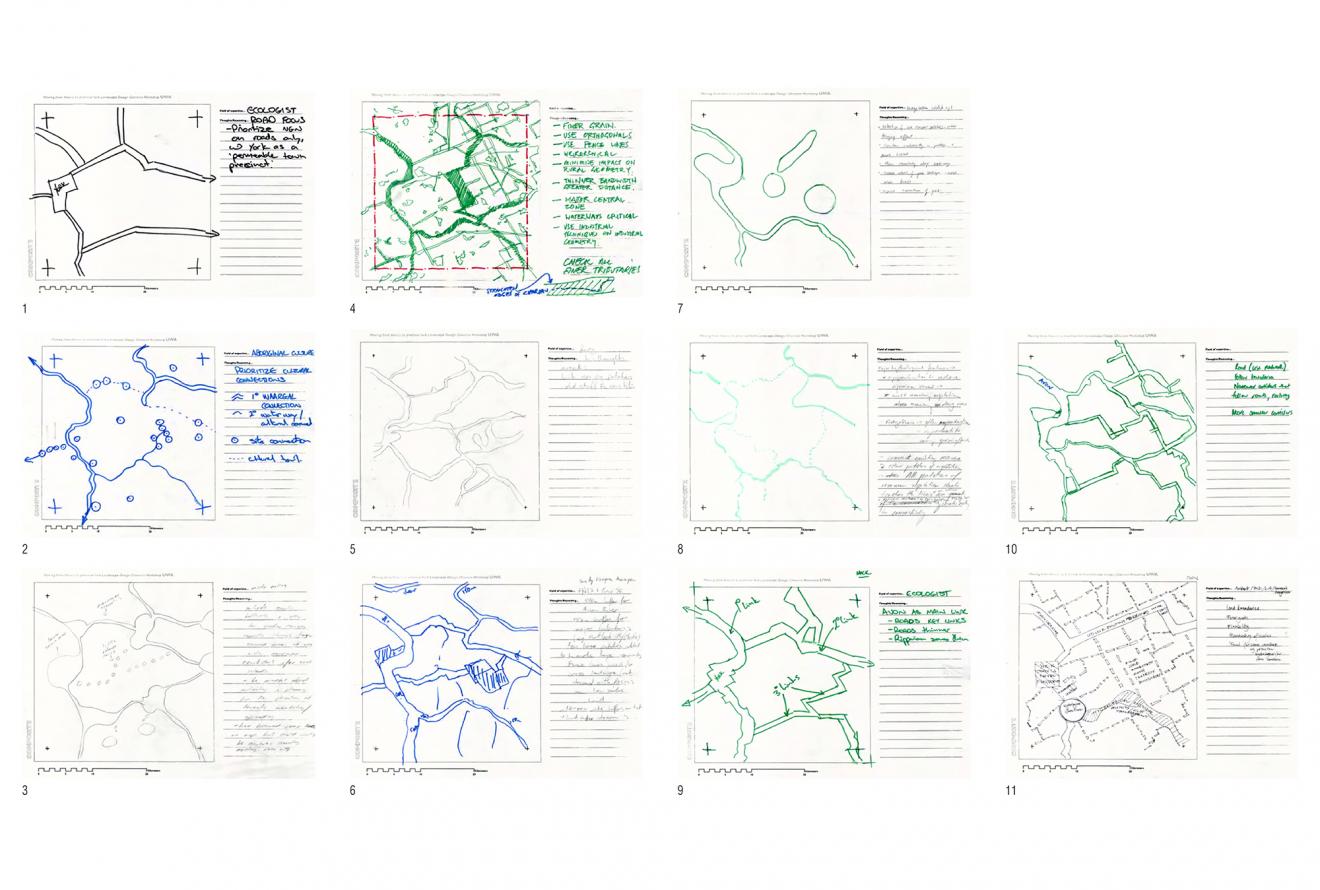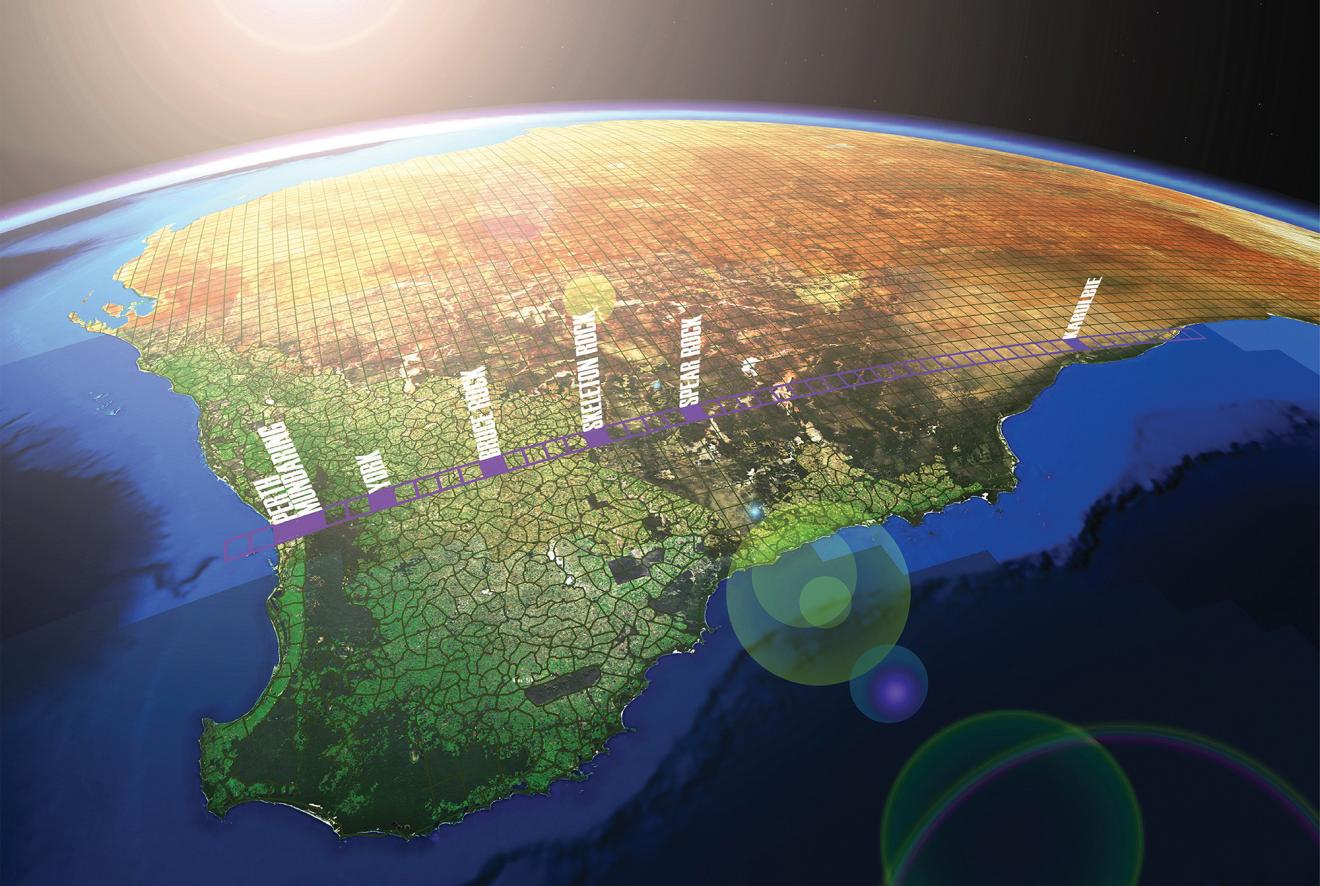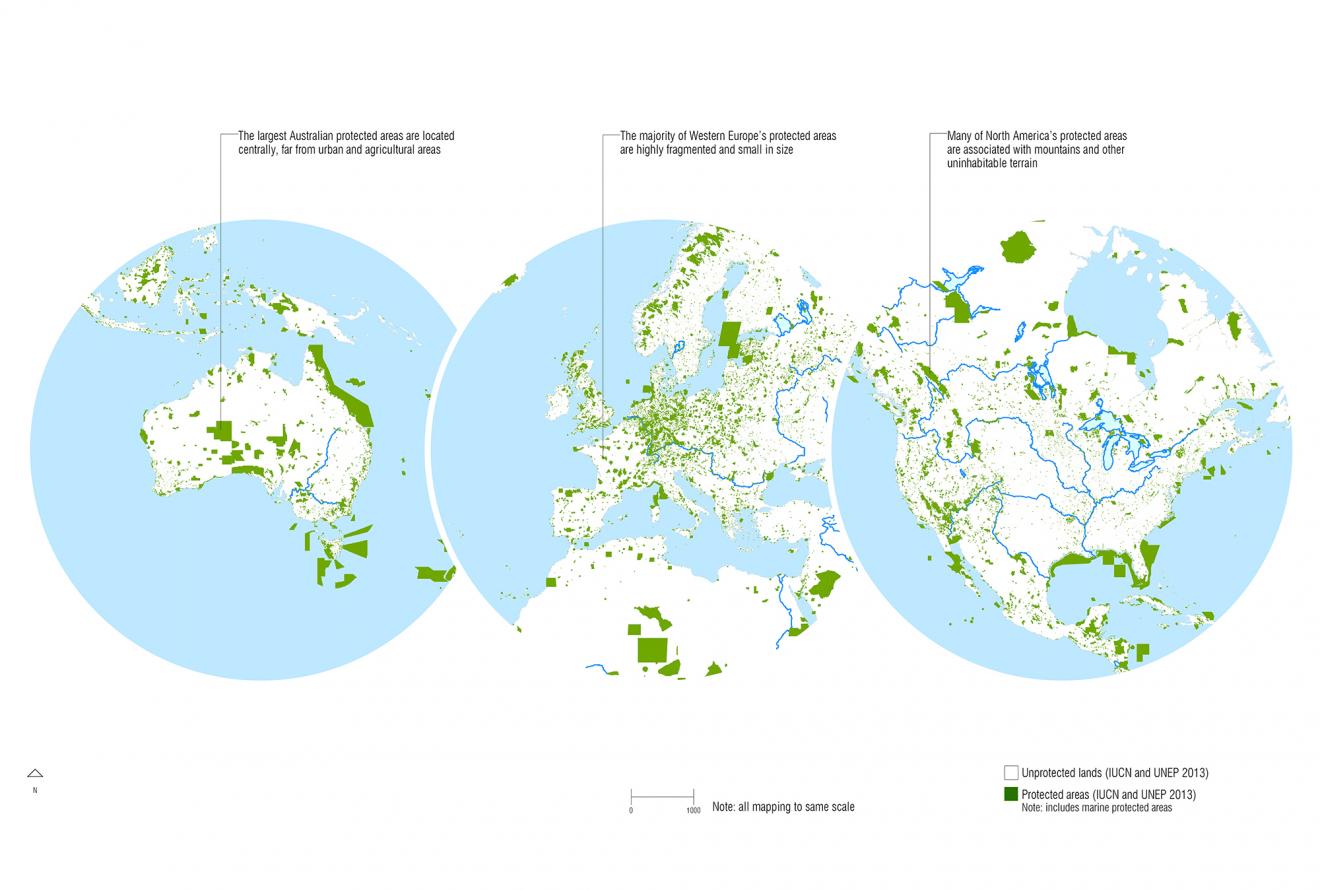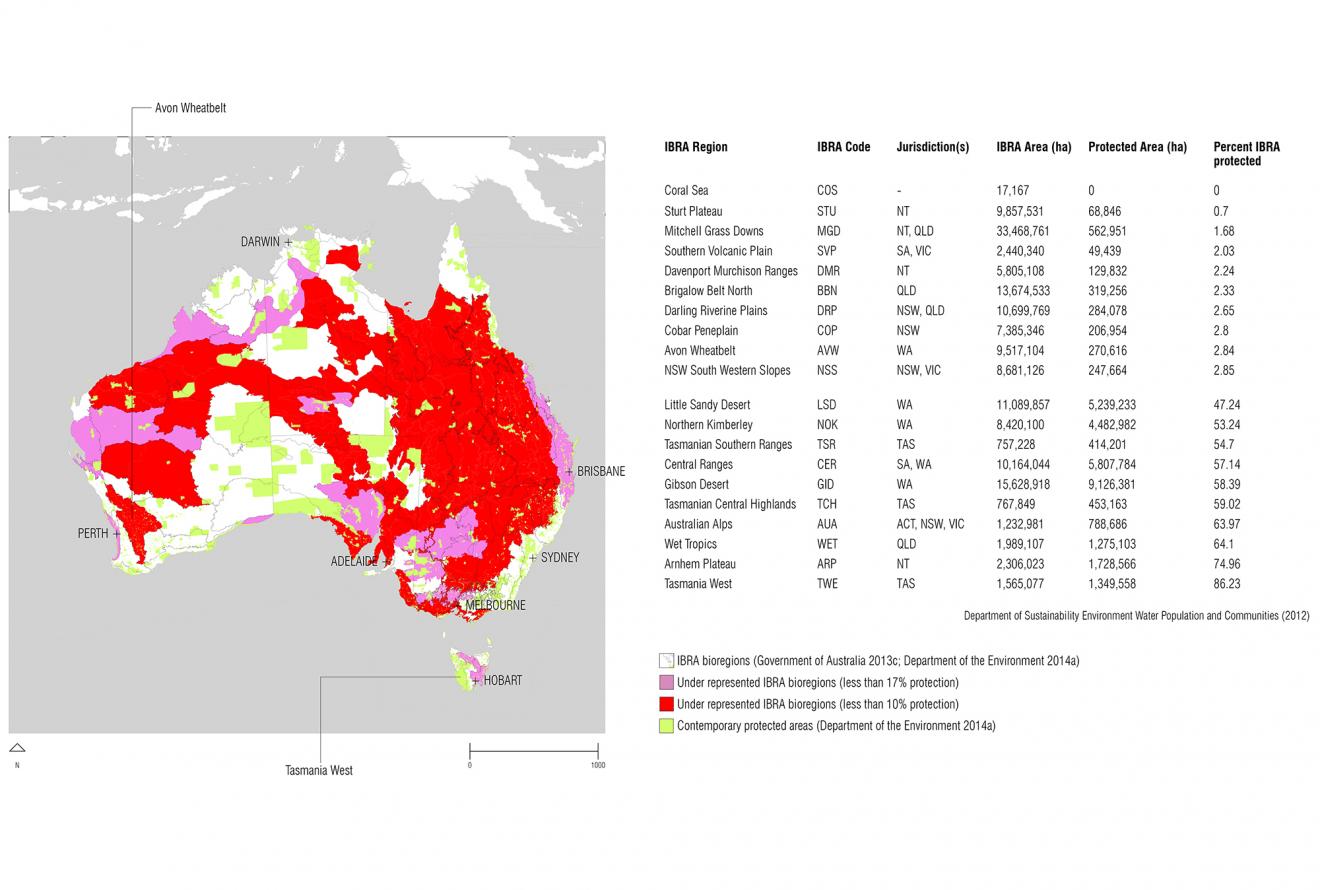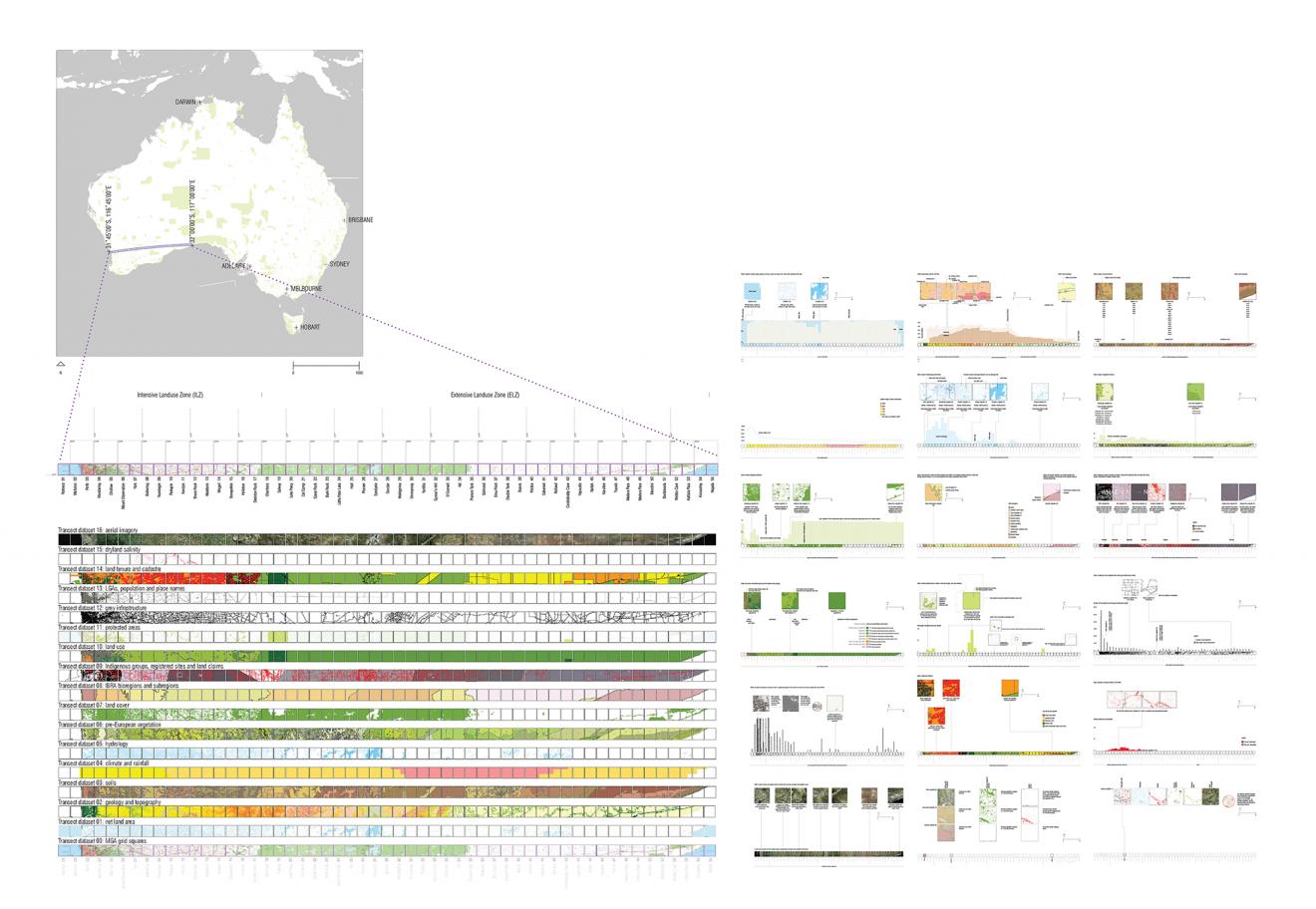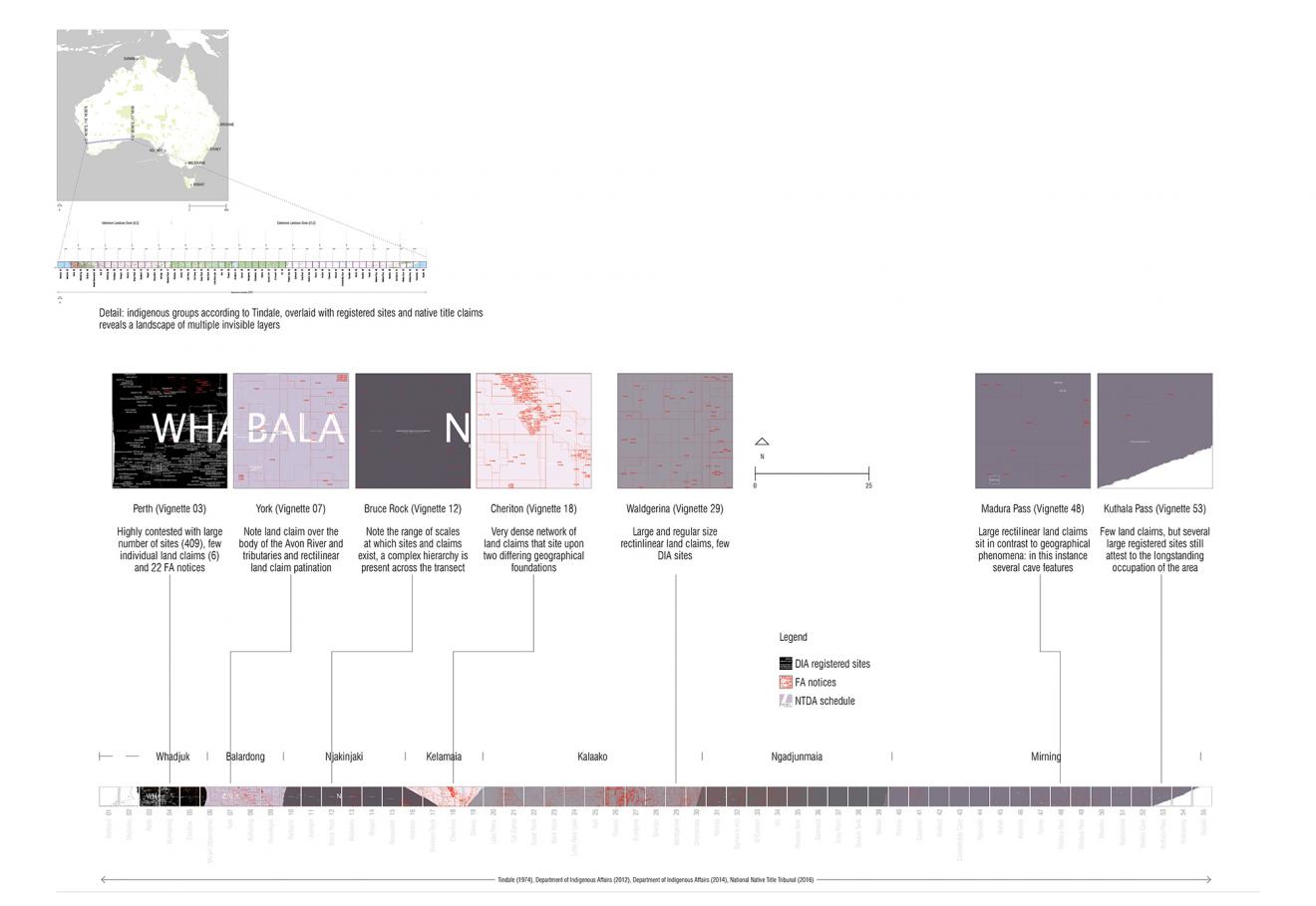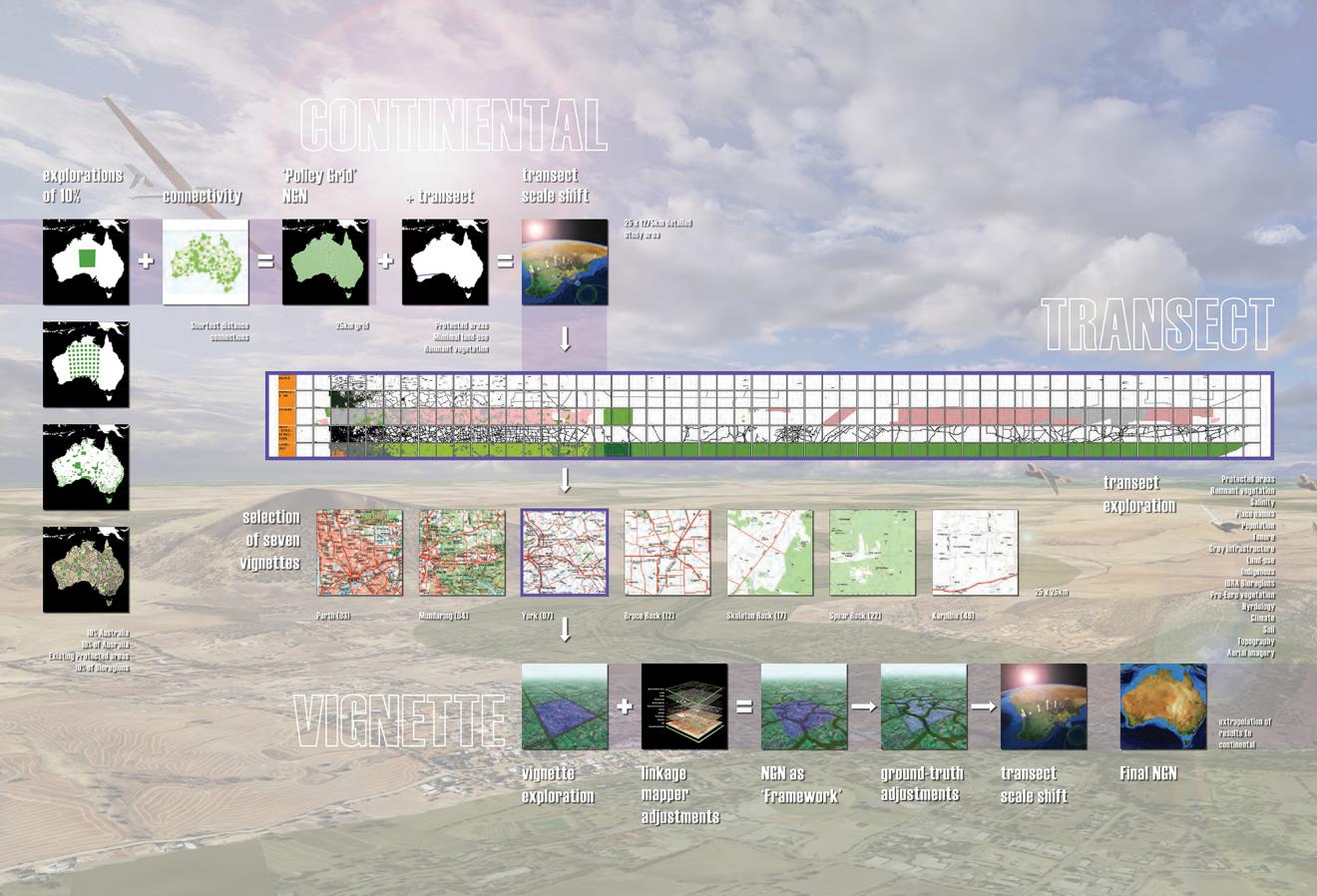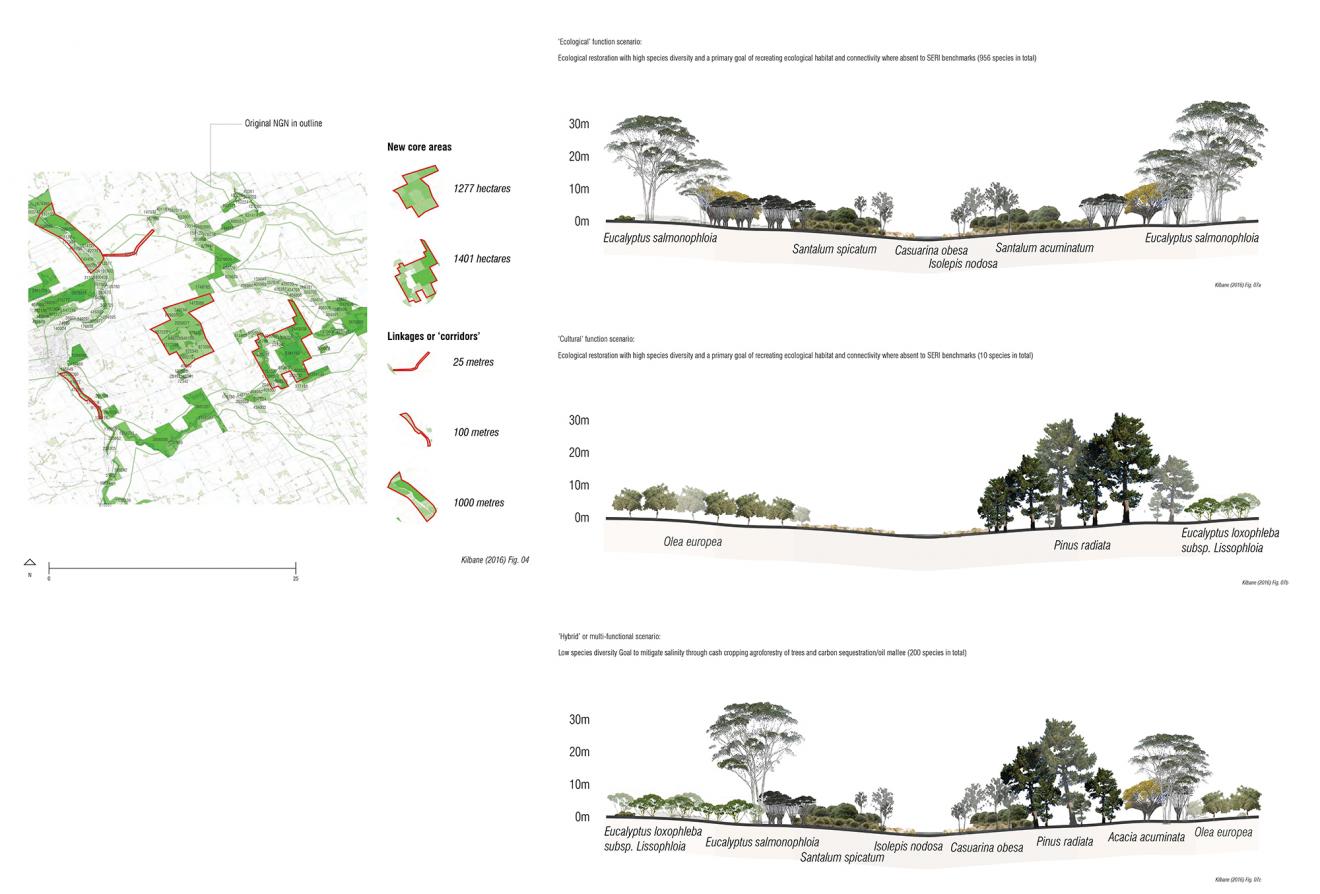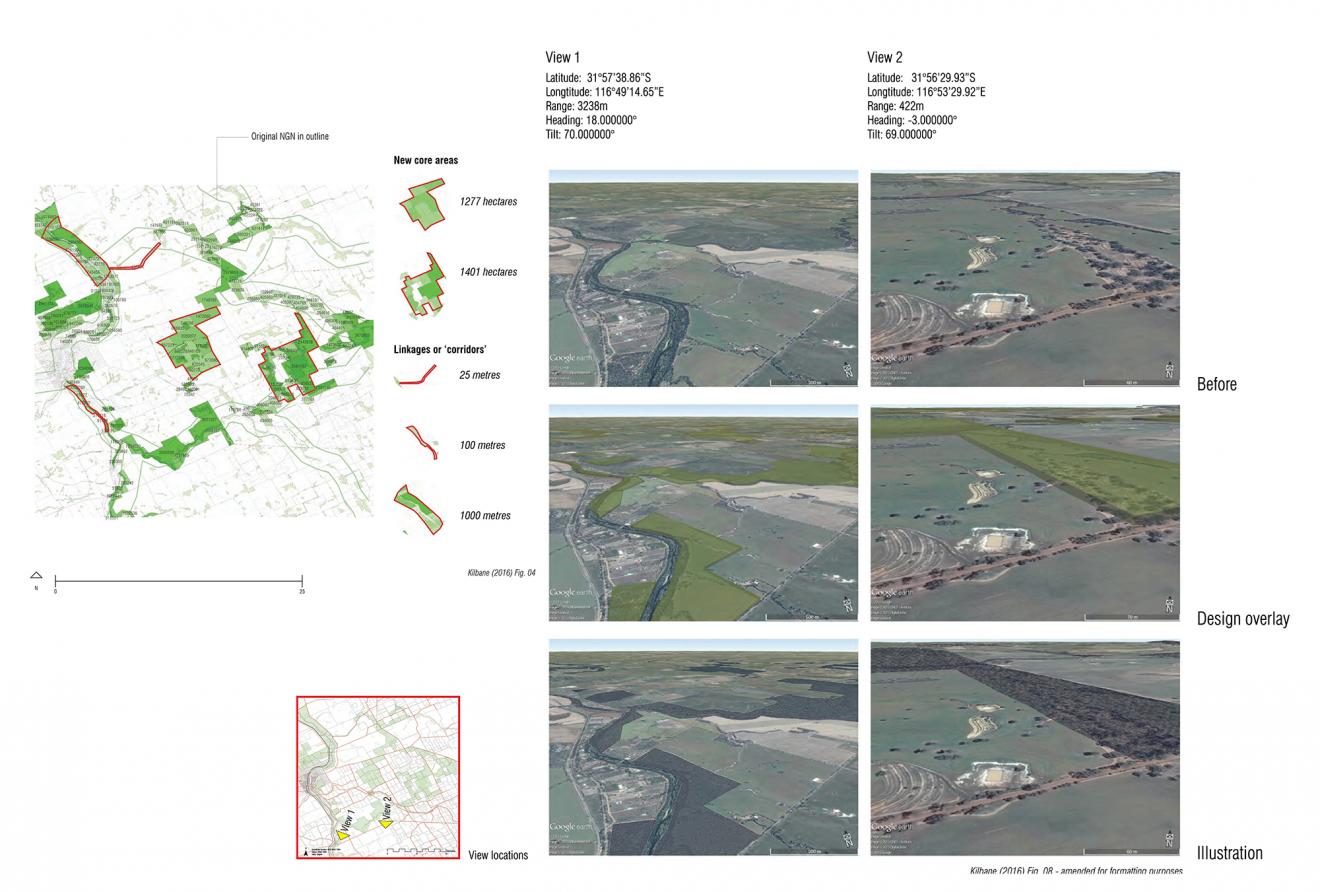Australia is currently witnessing a significant and relatively unplanned population growth. This growth is increasingly exerting pressure on urban areas, infrastructure and the fragile ecologies of the Australian continent. Concurrently, as signatory to the internationally binding United Nation agreement of the Convention on Biological Diversity, a ubiquitous target of 10 per cent protected area across the nation’s eco-regions must be maintained or created where lacking in coverage.
This research project argues for the benefits of a designed ecological network—the National Green Network—promoted as counterpoint to this rapid growth and crucial in securing the future ecological, environmental, social and economic resilience of Australia. While a multitude of benefits from such a plan are foreseeable, the central message posited is that planning of this type ideally should precede city expansion.
The significance of this research lies with its design methodology. This design project explores key targets as yet not explored for Australia and provides a design framework from which a new understanding of landscape planning and landscape can be considered. This includes questioning the potential of planning at a continental scale; the utilisation of various technologies, including geographic information systems; and refinement of design ideas through a design charrette.
